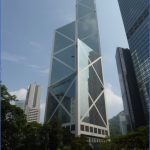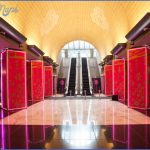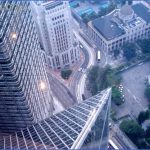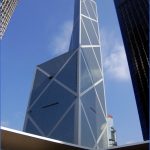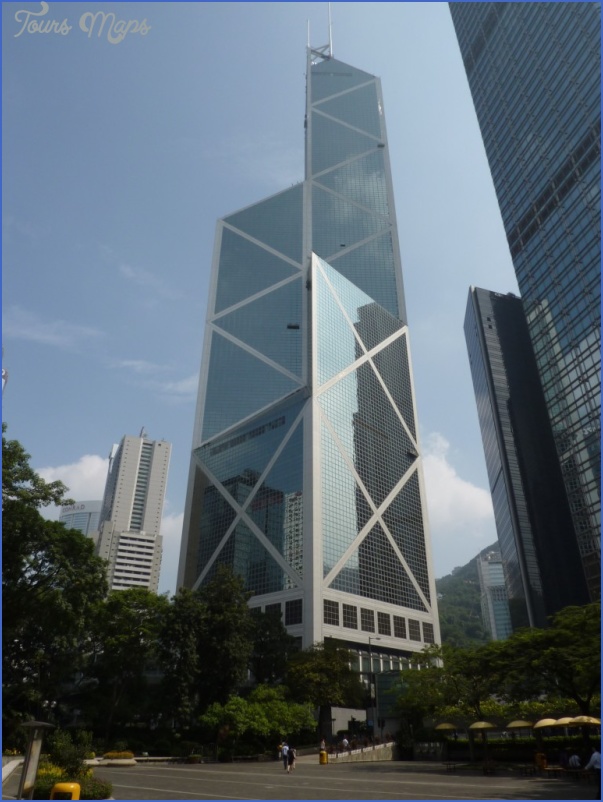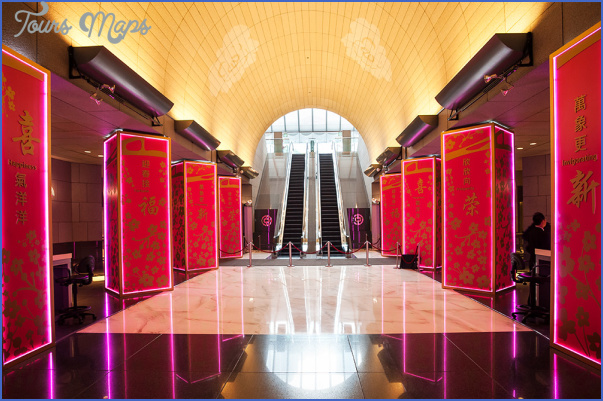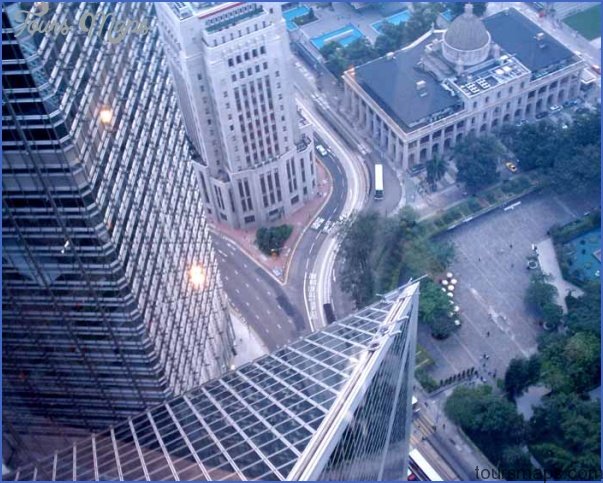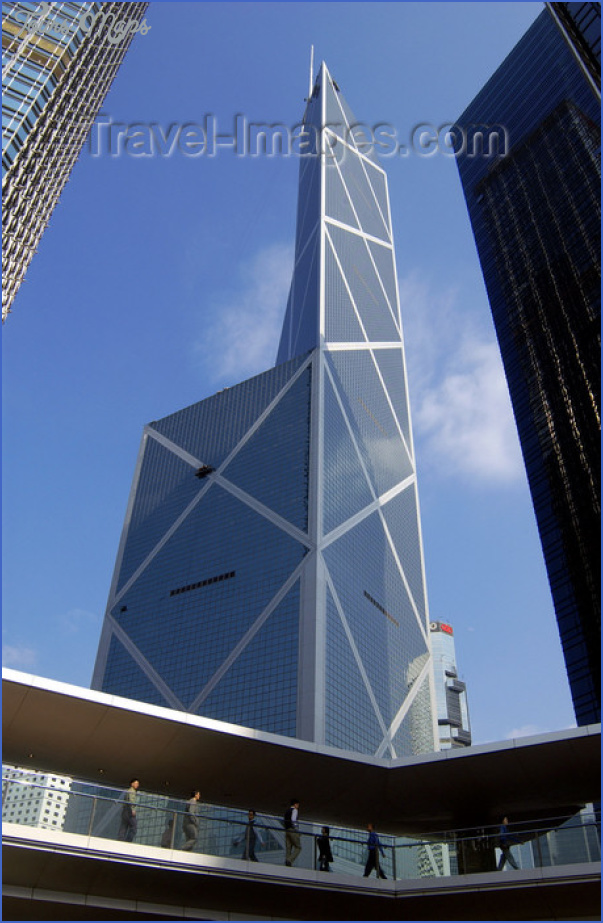Going east from Wan Chai we cross into the district of Causeway Bay, which has developed into a popular shopping and restaurant area since the opening of the road tunnel running under Victoria Harbour to Kowloon (Cross-Harbour Tunnel). In Typhoon Shelter, which is a specially constructed harbour with protection against typhoons, the luxury boats and pleasure yachts ofthe Royal Hong Kong Yacht Club are moored, along with some 7500 boats and junks belonging to the “Boat People”.
A little way to the south ofthe yacht club building stands the World Trade Centre.
Further east we reach the districts of North Point, Quarry Bay and Shau Kei Wan, where the ramshackle shacks of the squatters can be seen stretching out above the modern residential areas.
Inland to the south of Wan Chai is the district of Happy Valley with its large-scale sports facilities (including a racecourse). An interesting document of local history is provided by the four cemeteries – one Persian, one Catholic, one Muslim and one from the Colonial period – which lie along the road behind the Royal Hong Kong Jockey Club.
Further over to the south-east lies Tiger Balm Garden (Tai Hang Road), a well-known but also controversial leisure park, which was laid out in 1935 and named after the “Tiger Balm” menthol ointment invented by the Chinese Aw Boon Haw. Often onthe border between artand kitsch,the park contains plaster figures of fabulous animals from Chinese mythology, artificial mountains with caves and grottoes and representations of life in old China. The park’s symbol is its 50m/165ft high white pagoda.
On the south-west coast of Hong Kong Island lies the old fishing port of Aberdeen. About 20,000 people live in boats and junks in its harbour, most of them working as fishermen or as stevedores on the surrounding wharves. A trip round the harbour on a sampan and a visit to the big fish market can be recommended. Aberdeen is also well-known for its floating restaurants. Lying beyond the harbour and linked to the town by a bridge is the island of Ap Lei Chau (“duck’s tongue”) with its large electricity station.
South-east of Aberdeen the Shum Shui promontory extends southwards. At its tip lies Ocean Park with one ofthe largest “oceanariuns” in the world. The park is divided into two sections on different levels, linked by a 1.4km/ 1 mile long cable-car. The journey from the lower level to the higher takes seven minutes and at the top the visitor will find the “Ocean Theatre” (performances with dolphins and sea-lions, etc.) and the “Wave Cove”, a pool with simulated waves. The biggest attraction is, however, the deep-sea aquarium, Atoll Reef, in which over 30,000 different marine animals can be viewed.
Along the south coast of Hong Kong Island, with its many small bays, there are a number of beaches of variable quality. The best, which tend to be very crowded during the summer season, are to be found along Deepwater Bay, Repulse Bay and South Bay (less spectacular).
The Stanley promontory is the southernmost extension of Hong Kong Island. The colony’s main prison is located here (formerly an internment camp at the time of the Japanese occupation during the Second World War). At Stanley itself the market is enjoyable to visit (particularly good for textiles), while the narrow beach at Stanley Bay is suitable for bathing. Mention should also be made of the Tin-Hau temple of 1767.
Skyscraper of the Bank of China Photo Gallery
Maybe You Like Them Too
- The Best Cities To Visit in The World
- World’s 10 Best Places To Visit
- Coolest Countries in the World to Visit
- Travel to Santorini, Greece
- Map of Barbados – Holiday in Barbados

